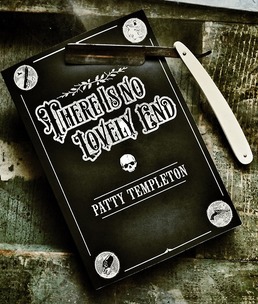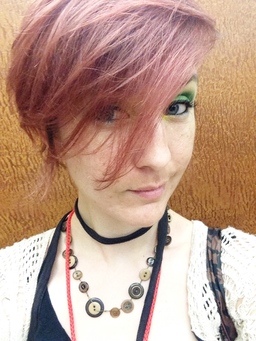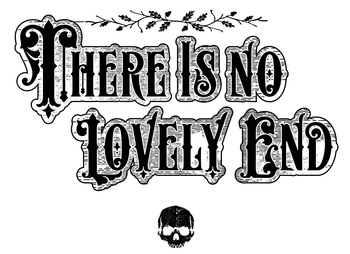Self-Publishing Checklist: The Random No One Tells You
 OH MY GAWD! You fancy glitterquill! You wrote a book.
OH MY GAWD! You fancy glitterquill! You wrote a book.
So did I. It took forever. Mostly because I was an undisciplined mess who worked multiple jobs for the majority of the book’s birthing, but HEY! It got done. And… it appears… you’ve done the same. Which is rad. Take a moment to celebrate yourself. I don’t care how you get yer good times (sex, napping, whiskey, dancing, WHATEVER!), but you need to celebrate. For example, I read for a week straight and C.S.E. Cooney got me a sweet potato pie. Which no one else ate. It was ALL MINE. For breakfast. For dinner. There was no guilt ONLY WIN AT LIFE!
But… okay. So you have this thing. It is a manuscript. It is in a Word doc. You want to self-publish it. What the hell happens now? A LOT. Dear GEEZUS, a lot. Are you sure you want to do this? Yes? Okay. Well, here is a list – NOT ALL INCLUSIVE – but a starter guide to the pile of stink you stuck your foot into.
1. Firm Out Your Expectations
- What do you want from your self-publishing experience?
- Do you want to be a bestseller? (Um… good luck.)
- Are you shooting to be a midlist author?
- Maybe you are a passionate amateur who is publishing for friends and family?
Whatever you are, know it and embrace it. My suggestion… keep your heart and drive high and your expectations low.
For example, I am a beginning writer with a few short story publications to my name. I have been hanging out in the fantasy and sci-fi convention circuit for about five years. I have a minimal online presence. I want to spread the word that I exist, that my first novel is an effing good ghost story, and *fingers crossed* I want to make my money back within a year on what I paid for the art, merch design, a proofreader, and incidentals.
That is my outer face. My innards are screaming, “GIVE ME A GD STOKER!” But that is… inappropriate. What I really want is to make enough money from fiction writing to be able to pay my rent. Which is doable with enough publications, hype, luck, time, frugality, and drive.
 2. Pick Your Publisher
2. Pick Your Publisher
- Do you want an ebook, a paperback, a hardcover, or an art book?
- Do you want to buy a bulk amount of books for cost and use indie selling methods? (Re: cases of books in your car trunk, touring, mailing books ordered from your website, etc.)
- Do you want to use a Print on Demand (POD) service? (Re: you can still get an ebook and a print book, but there is no overstock to pay for or house upfront and you aren’t responsible for mailing anything anywhere.)
Here’s the deal… the big three self-publishing platforms are Blurb, (Amazon’s) CreateSpace, and Lulu. Are there others? Yes. But these are the easiest. They are all POD sites and books published through each can be listed on Amazon.
Blurb is best for art books, cookbooks, and other picture/illustration-heavy books. If you are going for full-color, Blurb might be your best option. Lulu and CreateSpace are about even when it comes to royalty cuts and ease of production. If you are looking to create a standard sized book with B&W pages and multiple distribution routes, both are worth looking at.
Oh, I lied, another big gator is Ingram Spark through Lightning Source. Holy crap… they will make getting into libraries and bookstores easier for you.
For better or worse, I ended up going with CreateSpace.
3. Reality Check on Your Book Format
- Do you want an ebook or a print book? Both?
- Do you want full color?
- Are you creating an object of art or a functional book?
Your format is important. If you choose to publish an ebook, your costs can drop. Many artists have tiered pricing… if you want a cover image for a digital book, it may cost less than if you want a cover image for both a digital and print book.
 Know that if you pick an unusual size for your book, you may be shooting yourself in the foot. I originally wanted a non-standard size for my novel… but I used CreateSpace and through CreateSpace if you have a non-standard book size you cut yourself off from many physical distribution channels, including international distribution.
Know that if you pick an unusual size for your book, you may be shooting yourself in the foot. I originally wanted a non-standard size for my novel… but I used CreateSpace and through CreateSpace if you have a non-standard book size you cut yourself off from many physical distribution channels, including international distribution.
Mind you, that is through Amazon. You can sell and ship a book any size anywhere from your own website – but that is a lot of work and record keeping.
Most of my sales will probably come through Amazon, and hell, if someone in Denmark sees my book on Amazon and is like, “I MUST READ THIS MAD MEDIUM GHOST TALE!” Who am I to tell them they should only be able to get the ebook because I am too busy/lazy to go to the post office every other day for personal website sales? F that.
More on the format… your cover can and should be in color. (HA! Says the woman with a B&W cover.) You want a cover that POPS from a thumbnail size. Think about the colors used in your genre and also about making your title readable from any size. Neither Lulu nor CreateSpace charge more for a color cover. It is printed separately from your book innards. BUT! Don’t expect your book guts to be in color – unless you want to SKYROCKET your production cost and therefore increase how much you will have to charge for the book.
All I wanted was color endpapers, but nope. Ain’t gonna happen this round. It would’ve made the book hellaciously expensive. If one part of your book innards be in color, they have to print the whole thing on a color printer = upping costs.
I firmly believe that art and entertainment should be affordable. I am writing books to be read, not to be shoved on a high shelf somewhere. Someday, maybe, I’ll create a limited edition hardcover that will be more book-as-art, but for now, I want my paperback to cost about the same as 3 large lattes. Maybe less.
::tea break::
::deep breaths::
How are we doing? Okay? Good.
So you have a manuscript. You have decided on a publisher. You know weird tips about how your book’s format can affect its price and distribution. Now what?
In Part II, we look at finding versus commissioning art, merchandising, and the importance of finding a proofreader. See you then!
PATTY TEMPLETON is roughly 25 apples tall and 11,000 cups of coffee into her life. She wears red sequins and stomping boots while writing, then hits up back-alley dance bars and honky tonks. Her stories are full of ghosts, freaks, fools, underdogs, blue collar heroes, and never giving up, even when life is giving you shit. She won the first-ever Naked Girls Reading Literary Honors Award and has been a runner-up for the Mary Wollstonecraft Shelley Award. There Is No Lovely End is her first novel.
Patty, I love the energy to your post. Looking forward to reading more about your journey to self publishing.
Ditto Mr. Johnston’s post above on both your passion and my looking forward to the next installment. Color or not, love the cover. Best of luck to you.
I’m thinking of self-pubbing a large project next year. Thank you so much for sharing what you’ve learned.
@Ty: Thanks!
@Jason T: I love the cover, too. We are going to get into book art in another post. 🙂
@Sarah: OI! Good luck! It can be intimidating, but also absolutely awesome.
[…] got me a blog over at Black Gate. It is part one in a three-part series about the holy-crap-lots-to-think-about in […]
Excellent article! It’s so inspiring to see you on your writerly journey. You RAWK!
@J9: FANKS, Miss J9! Good luck on your own journey! It’s a long, worthwhile, haul.
[…] Self-Publishing Checklist: The Random No One Tells You, Part I […]